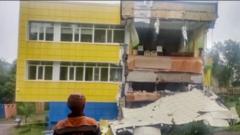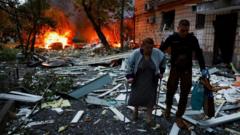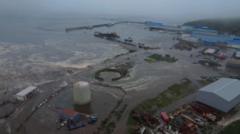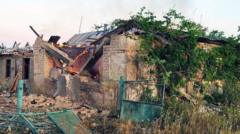Following a devastating earthquake in March, Nay Pyi Taw will undergo a major redesign to ensure its buildings are more earthquake-resistant. With significant structural damage reported, the government plans to relocate some offices and carry out soil tests before reconstruction.
Nay Pyi Taw's Reconstruction Plans Following Major Earthquake
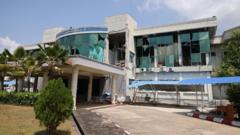
Nay Pyi Taw's Reconstruction Plans Following Major Earthquake
Myanmar's military government announces a redrawing of Nay Pyi Taw's layout after significant earthquake damage, prioritizing future resilience.
Myanmar’s capital city, Nay Pyi Taw, is set to undergo a significant transformation following the devastating earthquake that struck the nation last month. Senior General Min Aung Hlaing, the country’s military ruler, made the announcement during a government meeting that included discussions about the extensive damage caused by the 7.7 magnitude quake, which occurred on March 28.
Officials have reported that around 70% of government buildings in Nay Pyi Taw suffered damage due to the earthquake, which was powerful enough to be felt as far away as Thailand and South-West China. The earthquake resulted in the tragic loss of over 3,500 lives and left more than 5,000 individuals injured. In light of the destruction, General Hlaing emphasized the importance of constructing new office buildings that are fortified against future earthquakes. To that end, soil tests will be conducted prior to the initiation of any new construction projects.
The city of Nay Pyi Taw, which emerged in 2005 and spans over four times the size of London, has seen limited development in terms of population. The government intended to create a planned capital with wide boulevards and significant infrastructure; however, the city has remained relatively empty. Now, in the wake of the earthquake, some government departments have already opted to relocate their offices to Yangon, the former capital, as repairs on damaged structures in Nay Pyi Taw will take considerable time and resources.
In addition to moving offices, critical governmental documents and equipment have reportedly been removed from severely damaged buildings, including the Ministry of Labour and the Ministry of Tourism. The National Museum staff are actively working to salvage historical items, including tens of thousands of books, inscriptions, and manuscripts, amidst the ongoing crisis.
As Myanmar continues to grapple with the aftermath of the earthquake and the ongoing civil unrest that has plagued the country since the military coup in 2021, the proposed redesign of Nay Pyi Taw may serve not only as a means of recovery but also as a necessity for enhancing resilience in the face of natural disasters.




